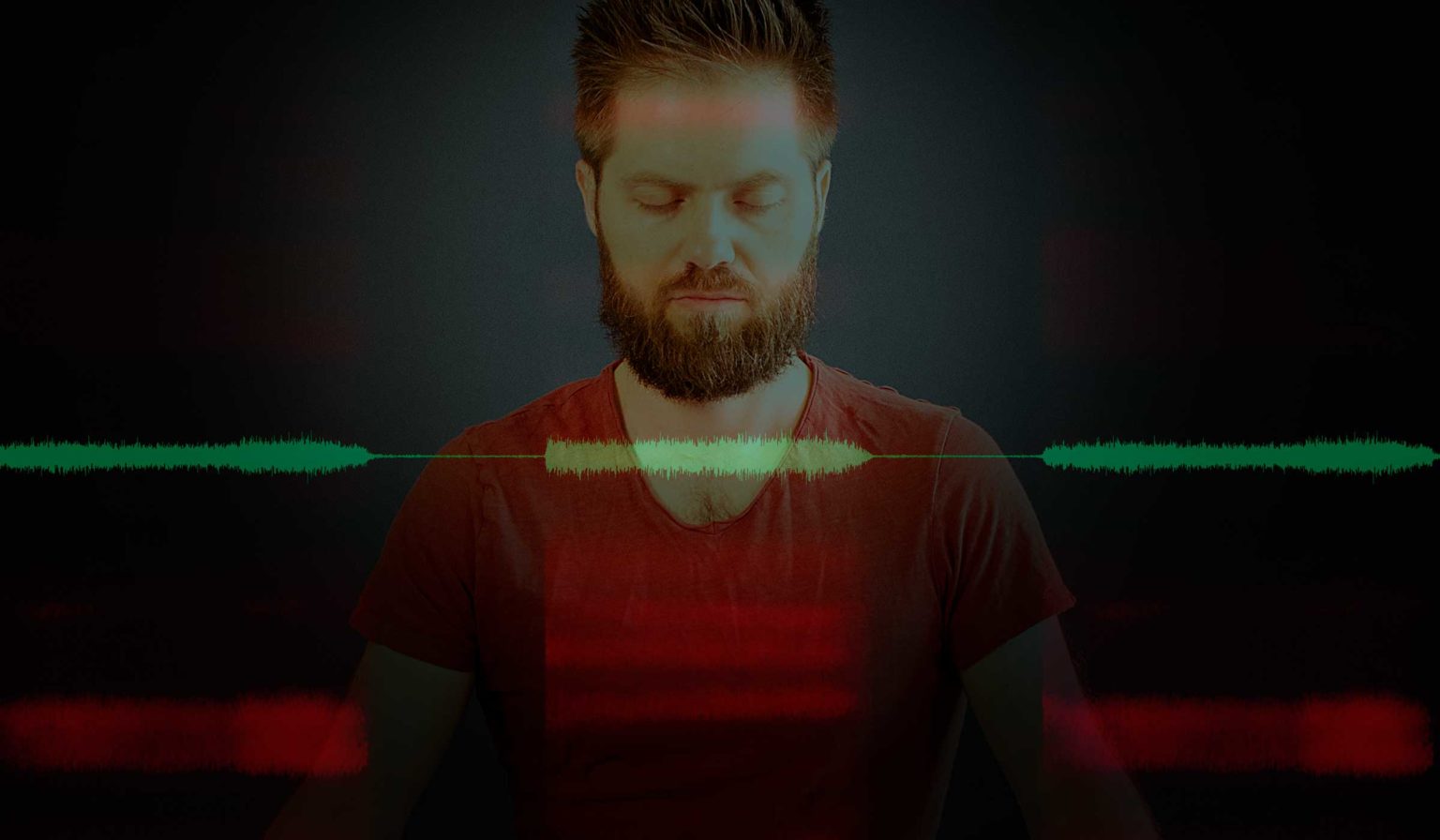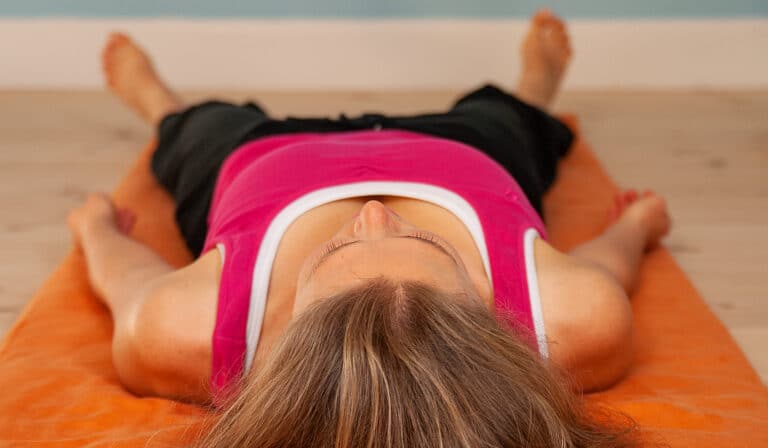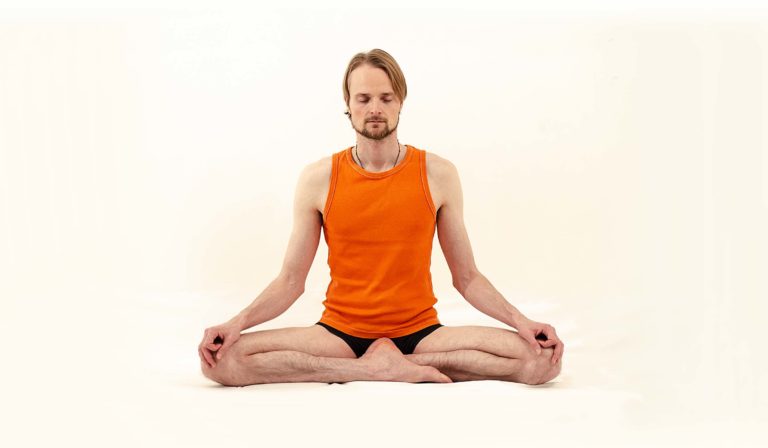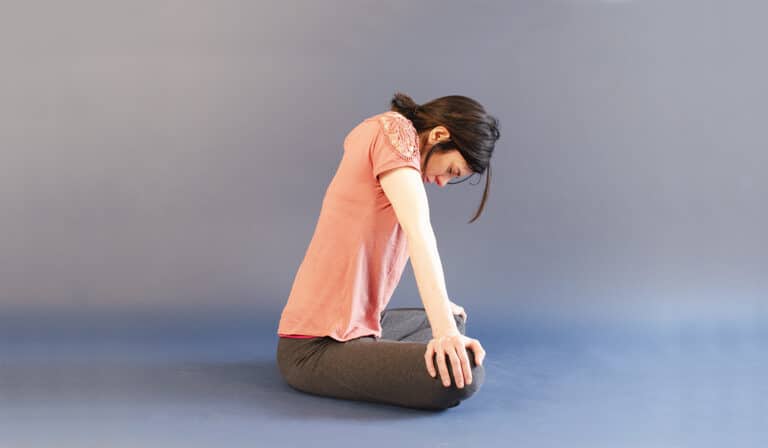Ujjayi pranayama is one of the most essential hatha yoga practices. You do it by producing a soft whispering sound while breathing. Though deceptively simple, it has a profound impact on your nervous system and your energy. Ujjayi pranayama is the backbone of Kriya Yoga, one of the most advanced old school yoga systems that have survived to this day. In this article, I will teach you how to do Ujjayi correctly and all you need to know to make this practice your own.
Ujjayi is a meditative pranayama
Ujjayi pranayama is also called the psychic breath, the ocean breath or kundalini pranayama. To do it, you breathe with a slight whispering sound. This allows you to slow down your breath and make it deeper, more regular and smooth. Ujjayi has an immediate impact on your nervous system, your mental state and your energy. Thanks to this breath, you can quickly bring yourself into a meditative state.
The meditative state you enter thanks to the psychic breath induces deep healing and releases energy bound by psychic tensions. That is why this pranayama has an energizing and empowering effect.
In some contemporary yoga styles, Ujjayi is used along with dynamic physical yoga exercises. That is not the usage I will present to you. I will describe Ujjayi as meditative pranayama.
How to sit for Ujjayi
I recommend that beginners practise Ujjayi pranayama sitting in sukhasana, the easy pose. If you are comfortable in the lotus pose, half lotus or siddhasana, you can sit on one of those as well.
Suppose you are unable to sit in any of these poses. In that case, you can do Ujjayi sitting on your knees in Vajrasana or on a meditation bench. You can even practice Ujjayi lying down.
Make sure you have digested your last meal
When you work with your breath, you must have digested your last meal. If you haven’t, you will experience discomfort, and it won’t be easy to slow your breath down. Wait at least three hours after a big meal before you practice. Apart from this limitation, you can practice Ujjayi at all times.
How to make the Ujjayi sound
Since it is essentially a whisper, the Ujjayi sound is easy to make. Nevertheless, beginners are sometimes intimidated and feel that they have to do something more complicated.
To teach you the Ujjayi sound in a playful way, I have prepared a small exercise for you. It will just take you a couple of minutes, and it will help you discover what the sound is and how to produce it. Let me guide you, and you will learn to make the Ujjayi sound easily.
Step one – Whisper the syllable “ha”
I will first ask you to whisper. Whisper the syllable “ha”. In a whispering voice, pronounce “ha” several times. First, a short sound, then longer and longer. Just like in the recording below.
Step two – Pronounce the “ha” sound on the out-breath and the in-breath
Very well. Now let’s slow down even more. And this time practice making the “ha” sound both on the in-breath and on the out-breath. Speaking with a regular voice on the in-breath is impossible. But whispering on the in-breath is easy.
Try repeating what I do in the next recording a few times.
Well done! That is the right sound.
Step three – Breathe through the nose
The next step is to breathe through the nose, still producing the same sound in the same way. When the mouth is closed, the sound will be slightly muffled, but otherwise identical to what you just did. Closing your mouth and letting the air enter through your nose makes no crucial difference.
Listen to the last recording to hear how Ujjayi sounds when you breathe through the nose. Then, try it for just a few breaths.
Now you know how to make the sound correctly.
But there is more to Ujjayi.
Slow the breath down and add brief breath retentions
When you do the Ujjayi breath, the idea is to slow the breath down so that it is slower than your ordinary breath. Initially, you will probably not be able to breathe nearly as slowly as the last recording. Still, with regular practice, you will get closer to it.
You must add brief breath retentions to your practice. Both after the in-breath and after the out-breath. If you don’t get these retentions right, you run the risk of hyperventilating. That could make you quite dizzy.
To get the breath retentions to last long enough, I instruct my students to count. Count to six on the in-breath, count to three while holding your breath, count to six on the out-breath and to three while holding your breath out.
Try to count slowly and calmly, as the rhythm of a ticking clock. If the 6:3 rhythm is too fast, start with 4:2. But try to slow down as soon as you have gotten used to the method.
The counting is there to fix the proportions between the breath and the retentions. Naturally, you can count 8:4 or even 10:5 as well. But only do that if it feels harmonious for you.
The ideal rhythm for Ujjayi is said to be 90 breaths per hour which comes back to 40 seconds per breath. I agree with that. But from teaching this technique to many hundreds of yoga students, I know that the average person only gets there during periods of intense practice under exceptionally favourable conditions.
Add Khecari Mudra to the psychic breath
There is another element you will want to add to the psychic breath. That is Kechari Mudra. To do the preliminary Kechari, fold your tongue upwards and backwards and touch to the soft part of the palate with the tip of your tongue. This mudra is likely to feel awkward, to begin with, but you will quickly get used to the position of the tongue. Until you do get used to it, relax your tongue from time to time.
Khecari Mudra is an essential hatha yoga practice. In the preliminary form that I have just described, it has a subtle effect on your energy flows. You may or may not be able to notice it. In the more advanced stages of Khecari, the mudra is more potent.
Khecari also has more down to earth benefits. Many yogis think that positioning the tongue like this helps them to slow down the breath and to make the flow of air more smooth.
The right moment to practice Ujjayi
As long as you practice on an empty stomach, you can do Ujjayi at any time of the day. Late-night practice might not be your best option, though. You may get a bit too energetic and find it difficult to fall asleep afterwards. But if you want to practice Ujjayi in the evening, try it out and see if it works for you.
When practised together with other pranayamas, you will want to place the psychic breath at the end, after the alternate breath, Nadi Shodana Pranayama.
How long to practise Ujjayi
Beginners to Ujjayi can start with 10 minutes of practice. Experienced practitioners can go on an hour or more at a time.
Who should do Ujjayi
If you are learning yoga on your own, I don’t recommend you chose Ujjayi as your first yoga practice. Work with yoga poses and simple breathing exercise first. Working with awareness-based meditation is also beneficial before getting going with the psychic breath.
Teachers can introduce Ujjayi to students early if they guide sessions combining multiple kinds of yoga exercises. That is what I do in my yoga classes, both my live classes and my online sessions on Forceful Tranquility. For my regular city classes, I tend to put an Ujjayi based meditation at the end of a session. I begin with asana followed by pranayama and yoga nidra.
The psychic breath is a foundation for meditation
Ujjayi is a meditation on its own. When you practice it, you will quickly experience a shift in your state. Therefore, in the tradition of Swami Satyananda, we use the psychic breath as a foundation for several different meditation techniques. Some of them are so straightforward that you can do them as soon as you have become comfortable with Ujjayi. Others are more demanding and require thorough preparation.




